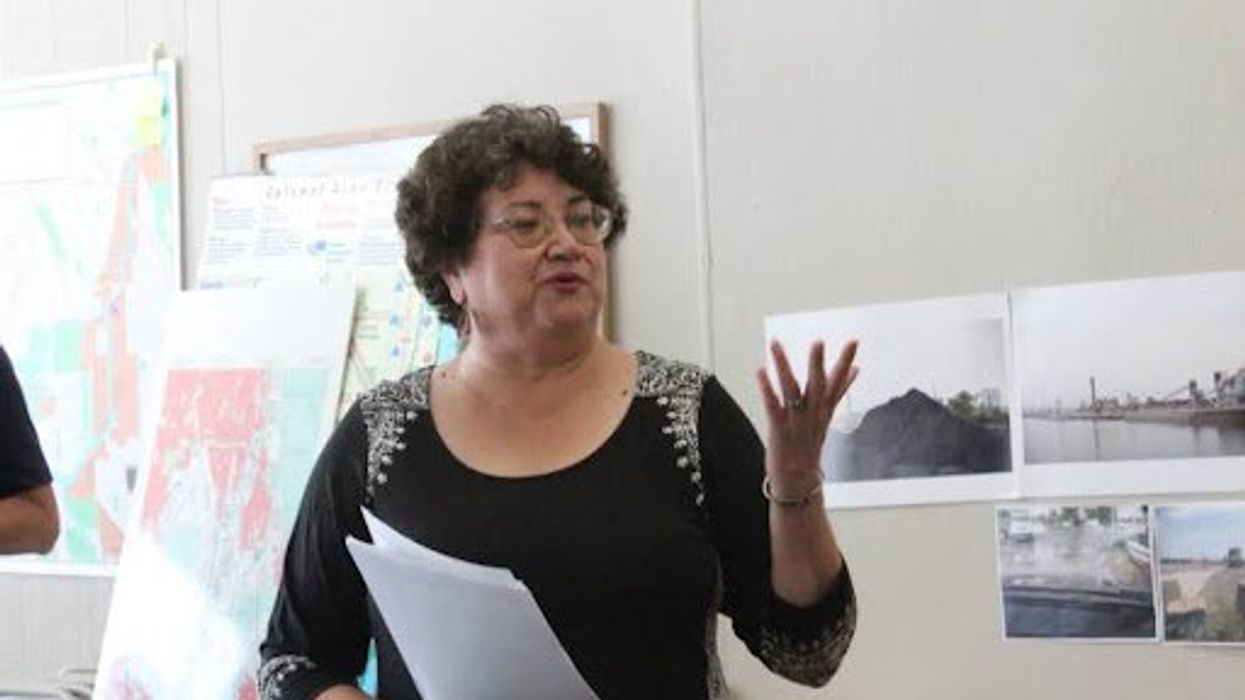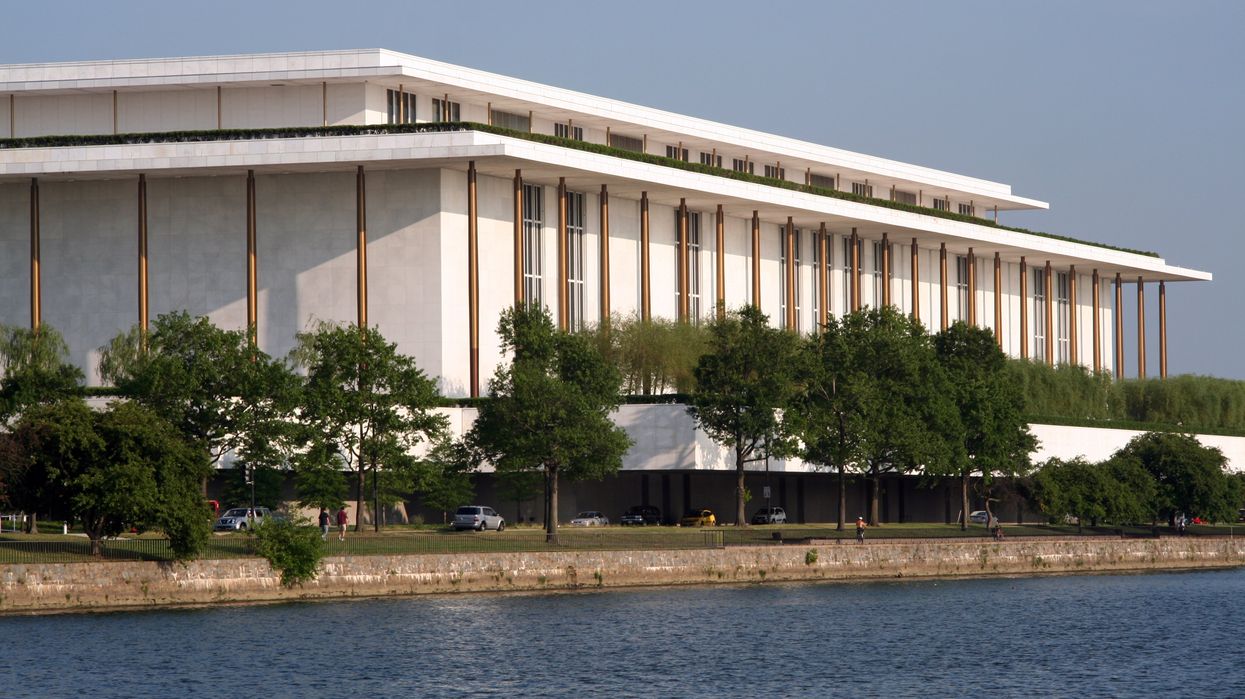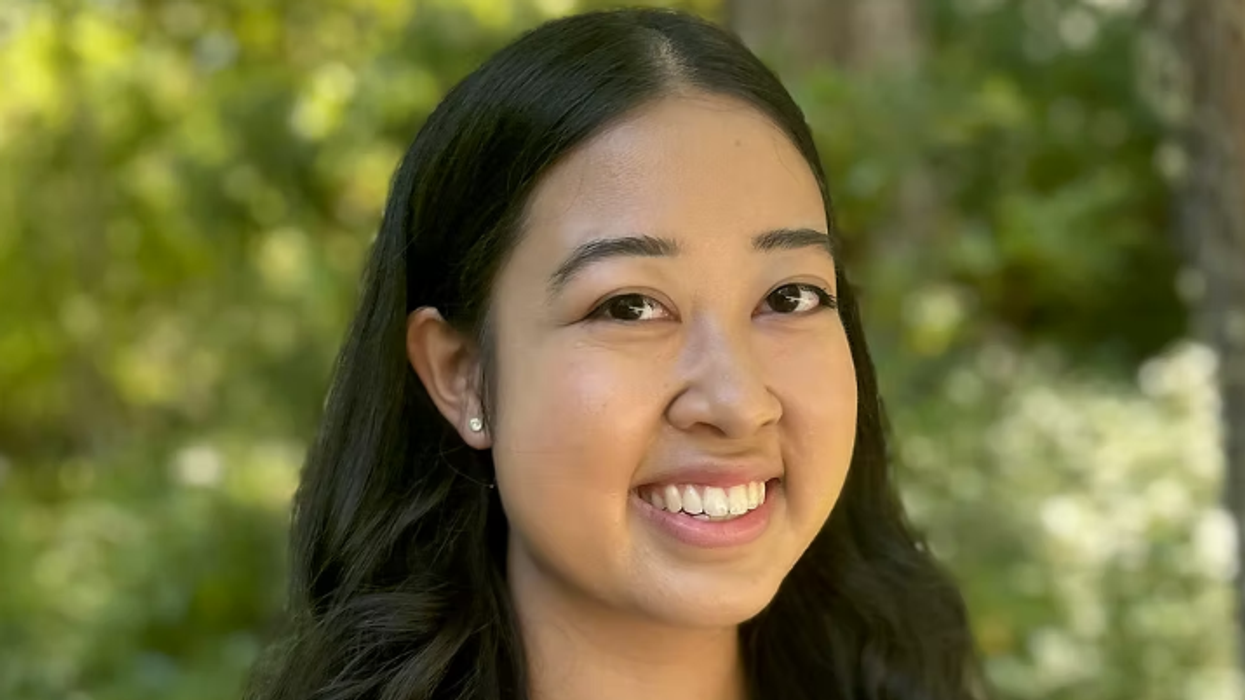Azzo is a graduate student at Northwestern University's Medill School of Journalism.
As a child, Peggy Salazar, a pioneer of Chicago’s environmental justice movement, would walk around the glittery streets of South Chicago at night. She walked them every day without questioning it. She sat on the benches, stairs, and rails and returned home with her back covered in soot. As the years passed, Salazar roamed through neighborhoods north of the South Works steel mill, where she realized a striking difference.
“The environment only came on my radar as a senior in high school because no one talked about [it],” says Salazar. Quickly, science became part of her daily life, and she soon realized that the “glitter” on the streets was not glimmers of her childhood dreamlike memories but, instead, part of the steel mill’s metallic fallout.
Living across the street from the factory was a double-edged sword. On one hand, the factory energized the community by bringing workers into the area. But on the other, it polluted every aspect of their lives. Unbeknownst to Salazar, she would grow up to fight against that disparity.
Hope and anger
Coming back from a long day of work at the steel mill, Salazar’s husband would blow soot out of his nose. She found hope when her husband lost his job at the steel mill after its closure in the 1980s. “I realized that our industrial corridor that runs in our community has been both a curse and a blessing,” Salazar says.
Her fear of embarking on a new adventure persisted. After that economic downturn, she was ready to wage an environmental fight for her family and neighbors. “It was an opportunity for our community to be reborn and then be refined,” Salazar says. This endurance was later matched with disappointment. After years of environmental advocacy battles, the South Side of Chicago is still a sacrifice zone.
Located in the industrial corridor where polluting industries still operate at the expense of Black and Brown communities with no impunity, South Chicago has been tagged as an Environmental Justice neighborhood by the Chicago Department of Health due to its high rates of pulmonary diseases from exposure to diesel and particulate matter, among other toxins.
By 2005, Salazar had lived and raised her family with the cumulative impact of pollution and wanted to make a change, so she joined the Southeast Environmental Task Force as a board member and soon became the organization’s executive director. The task force’s work frequently “rubbed shoulders” with the Alliance of the Southeast. Amalia NietoGomez, executive director of ASE, looks back at these early interactions and recognizes the lasting impact that Salazar had on their association.
“Our organization would have never worked on environmental justice issues if it had not been for her,” says NietoGomez.
Salazar never intended to take the reins. “I basically stumbled my way through there,” she says. Yet she assumed the responsibility to head the task force and excelled every step of the way. “I was there for 15 years, and we must have spent [approximately] $100,000 total,” Salazar recalls. She managed her work and team on a “shoestring budget” while leading one of Chicago’s most significant environmental justice fights against the scrap metal company General Iron, which Reserve Management Group purchased.
In the summer of 2018, the new owner publicly announced the relocation of General Iron from the Chicago River in Lincoln Park to the southeast side of Chicago. However, the Southeast Environmental Task Force spearheaded a legal fight and campaign against the industry from the ground up. Ultimately, Chicago denied a final permit for the move, but the battle continues.
Before the announcement was made public, Salazar and seven others stood before the factory’s North Side headquarters, “marching around with handmade signs,” she says. “Nobody knew who we were and why we were there.” She recalls that street sweepers “intentionally” sprayed one of the protestors with water to prevent them from attracting attention.
But the quest is much bigger than General Iron or Salazar. The quest is about environmental justice. So, when people laid across the tracks preventing petroleum coke trucks from entering the KCBX south terminal in 2014, there was little doubt that environmental justice would become the next hot topic.
Salazar’s drive for justice took SETF to lengths the group had never dreamed of. SETF took up the fight against the Chicago Police Department’s plan to open a firing range in their neighborhood instead of turning the open space into an inclusive communal public space.
“Up until I came in, the people who were in charge before me believed in working with the industries. I said forget the working with, we have to work against them,” says Salazar.
That attitude resonated with Robert Garcia, who worked with Salazar as a Centro Comunitario Juan Diego volunteer. “Peggy was willing to challenge the status quo no matter what it was,” he says.
Salazar’s grandchildren have been immersed in environmental justice since they were young. As early as they can remember, they would accompany their grandmother to put up campaign signs around the neighborhood, and sometimes they would even join her during demonstrations.
Alexis Figueroa vividly recalls the September 2014 “die in” when her brother, cousin and grandmother protested KCBX, a subsidiary of the multibillionaire Koch Industries.
Salazar started working on environmental justice “before it was the hot issue of the day,” says Meleah Geerstma, a former environmental lawyer with SETF. As a “no-nonsense EJ advocate,” Salazar knew what she wanted and always went for it. “She always did what she thought was right,” and still does.
Her team and surroundings always appreciated her authenticity and willingness “to fight but also listen and try to work things out,” says Garcia.
Salazar hopes to see the rebirth and revitalization of her community within her lifetime. She insists on a revitalization that would “improve, empower and educate the people so that they can engage their community and turn it around for themselves.”
Now retired, Salazar, “godmother of environmental justice,” as rightfully named by her community, has stepped down as director of SETF but still works with ASE on equitable development.
After 30 years of community engagement, Salazar still works to make sustainable change for her community. Every effort poured into her people spreads throughout Chicago’s veins, keeping her contributions echoed across the city’s oral history.
This article was first published in the Latino News Network, which partners with the Medill School of Journalism to provide students mentoring and real work experiences.






























